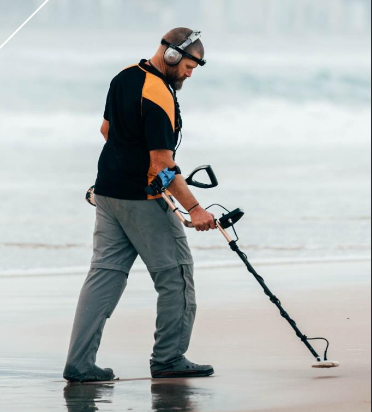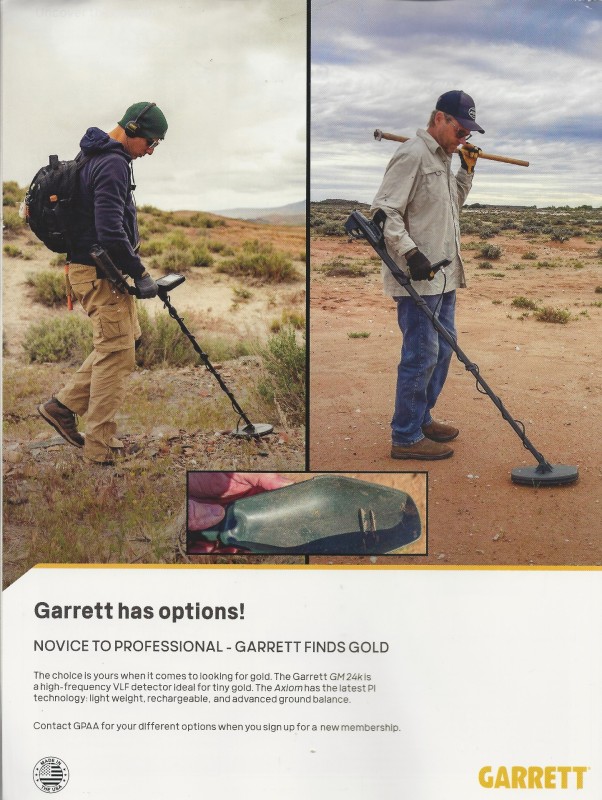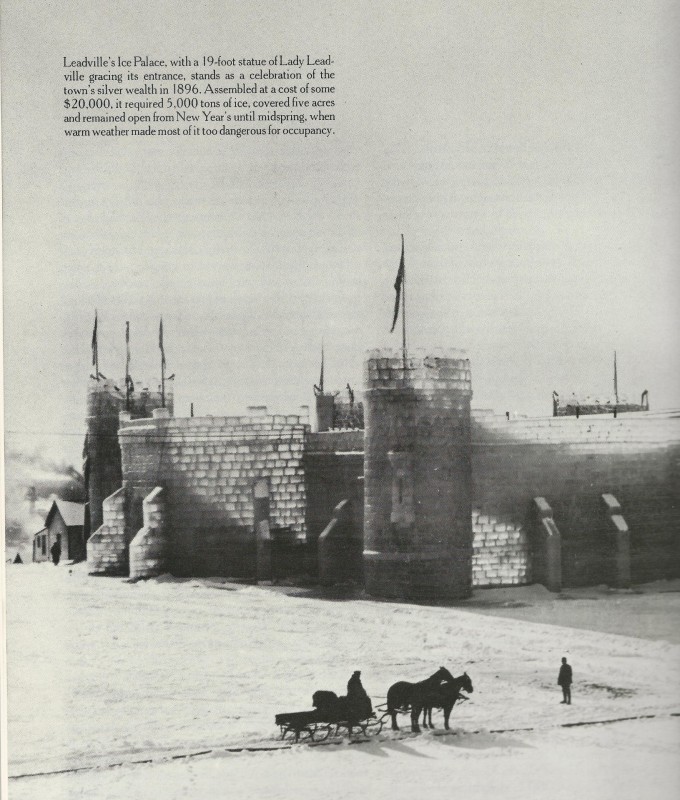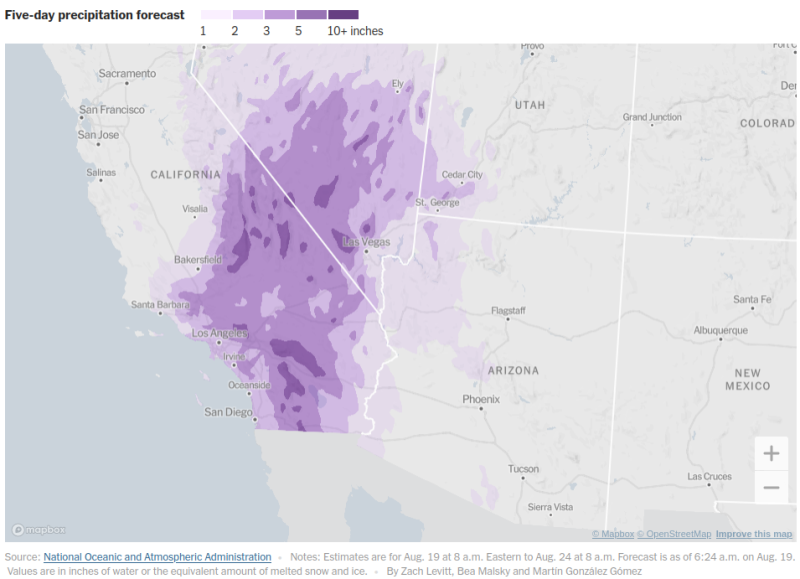-
Posts
5,808 -
Joined
-
Last visited
Content Type
Forums
Detector Prospector Home
Detector Database
Downloads
Posts posted by GB_Amateur
-
-
3 hours ago, WYAZCOL said:
I had the benefit of some fun early life (late 1960s) experiences of swinging a basic (Sears?) metal detector and then rediscovered prospecting about a decade ago. I enjoy the exploration, exercise, and excitement associated with digging each new hole.
Welcome, WYAZCOL!
Newbies or old hats -- it's the feelings you mention (throw in 'accomplishment' and 'self-satisfaction') that keeps us coming back.
-
Heat shrink tubing is another option, as long as you make sure not to melt the case when installing. (Not likely, but you all know about Mr. Murphy....) I've never used a protective cover myself, though.
I think I'm somewhere between Bill S. and strick in how I (ab)use pinpointers. I don't 'dig' per se, but I do slide it around in the hole, often pushing dirt out of the way to get closer to the perceived target. As such mine get scratched and worn down. But consider the following:
I bought a Garrett Carrot back in August 2015. While still under warranty (don't remember exactly when but 1-2 years later) it acted up and I sent it in for repair. Although the repair documentation it was returned with never said exactly what went wrong, they replaced a lot of it, including the case. My suspicion is that I cracked the case and water got in, damaging some of the electronics. It hasn't been back to its birthplace since.
I've mentioned and detailed in the past that I carry two pinpointers (other being a White's TRX) when coin detecting parks and schools (90% of my detecting time). I won't go into the reasons or methods (done that before) other than to say this same Garrett Carrot gets most of the use. And when I go West ghost-towning and nugget hunting I use the Carrot exclusively.
A few months back I noticed (when I cleaned the dirt off the tip...) that I had worn a hole through the housing at the tip. But the Carrot was still working (cue the Timex commercial...). After cleaning it well I filled the hole with epoxy (one of those that specifically works well with plastic, not the typical 5-minute garden variety) and so far so good.
This Carrot no longer works perfectly. The led often stays on even after it's been turned off. And lately I haven't been able to access the adjustment mode to check on or turn down the sensitivity. (It's on 3 -- highest level -- and as long as it stays there I'm happy.) When I'm done for the day I try to remember to take out the battery, but when I forget I just have to swap in a fresh one (I use rechargeable 9V with it so not a big deal). Other than those minor things this beat-to-hell unit still runs as well as the day I got it, after well over 1000 hours of (ab)use.
-
-
One thing I learned a long time ago, too: know the assumptions. The problem isn't with air tests per-se, but the (mis-)interpretation when the assumptions aren't taken into account.
Going further, it's fairly easy to do an in-ground test with a single target only (meaning no nearby good OR bad targets). How do you do a test with even just two targets? You can bury them but they stay forever separated (in all three directions -- left/right, forward/backward, up/down) by the same amount. What happens in the field? All those distances vary, and sometimes you get even more than two metallic objects within the coils zone of influence.
So, are test garden results worthless?
Air tests have their value. Test garden investigation has its value. If you expect those to tell you everything about what will happen in the field.... But to blanket throw those tests in the trashcan is also sub-optimal.
-
17 hours ago, CPT_GhostLight said:
The heart pendant, which I thought was probably from the 1930s or 40s, turned out to be from a very rare souvenir necklace from the Crystal Carnival Ice Palace built in Leadville Colorado in late 1895 and was dismantled in March of 1896. I've included the only photo I could find of one that was from an antique auction site to show what it use to look like before being in the ground for almost 130 years.
Coincidentally I just finished a book about prospecting and mining from ~1860-1900 (more on that below). Here's a picture (only half of the two page spread in the book) of the Leadville Ice Palace your pendant refers to:
And a description from page 172:
On November 1, 1895, a crew of 260 workmen that included 52 carpenters,... began to erect wooden frames for the ice blocks, most of which were obtained from the lakes.... It was so cold in Leadville, at its elevation of 10,000 feet, that the ice was (already) 20 inches thick. At first stonecutters were hired to trim the blocks to standard 20-by-30 inch size, but when (that) proved too slow, a number of Canadian woodsmen, equipped with broadaxes, were imported to do the job. Work continued day and night (for two months).
The completed palace..., 325 feet on a side (had) five foot thick walls.... The main entrance was flanked by octagonal towers 90 feet high and 40 feet in diameter....
(Among other things it contained a metal roof covered) 80 ft by 160 ft skating rink,... illuminated by electric lamps embedded in pillars of ice....
On display everywhere were industrial, agricultural, and mineral products of all sorts set inside great blocks of glass-clear ice....
The description continues for several paragraphs, but basically it was furnished, decorated, and outfitted like a (modern, at the time) museum to life in that area in the 1890's.
The book is titled The Miners and was part of a Time-Life series, "The Old West", published in 1976. The text was written by Robert Wallace but he had a lot of staff that helped with the research. 240 8.5 in x 11 in pages, probably at least half are photos, covers many of the gold and silver rushes and their subsequent mines post-California Rush, particularly Colorado, Virginia City (Comstock), Homestake, and Klondike. There's a lot of description of the austere life in those times which gives context to many of the finds detectorists make today in these areas.
-
Name that detector! Looks like a Fisher Gold Bug to me. (From P. 23 of report.)

-
Great report and nice finds.
59 minutes ago, Glenn in CO said:Of course you find a "what is it". It measures 1 1/4" x 3/4" made of brass or copper, maybe a gunsight?
Not sure but that looks like some kind of gauge. The top part looks like it was used to measure a size, possibly a diameter, of an object than can be slipped through it. OTOH it does appear to be crudely made and gauges are usually rather precise.
Have you figured out the metallic composition the square token, e.g. from its VDI on the Deus II?
-
For grading, this site is the standard: https://www.pcgs.com/photograde#/Indian/Grades Grading requires both sides (obverse and reverse) to be evaluated.
For evaluation, prices realized (sold items, not ones up for current sale) on Ebay is the best place, IMO. Here's one that is somewhat comparable to yours: https://tinyurl.com/33hw56ad
Those are the easy answers. As far as professional grading, yes, often they either won't give a grade or they give one with qualifications.
Regarding cleaning, the best answer for those who don't want to reduce/ruin the value is:
1) determine if the coin (date + mintmark + condition) puts it in the valuable range. (Yours clearly does -- scarce date AND excellent condition).
2) if answer to 1 is "yes", and the higher it is, the less you should be inclined to be in a hurry to clean it. Although water seems like a benign solvent, in fact it's not for coins containing a lot of copper (such as your Indian Head Cent). Cleaning coins is one of those areas where people want to give advice, but where that advice, although well-intended, is usually detrimental. Coin collectors can be extremely picky when it comes to surface condition. Something as simple as rubbing with a cotton cloth will scratch the surface which can easily be seen under magnification. Typical dirt is an abrasive. Even those pencils are in fact abrasive (and the manufacturers tell you that in the advertising, or at least with some digging into fine-print).
My bottom line advice: don't do any cleaning until you've researched deeply into what will do the least harm. The idea is to improve the value by cleaning, but that is usually the opposite of what occurs, particularly for high copper content coins.
Great find, BTW. 😉
-
What sensitivity are you running and how close the coil is the coin? There is a strong field quite close to the coil edges but for reasonable target distances (say 4 inches = 10 cm) the strongest part of the field should have shifted over to near the center of the coil. That's for reasonable values of sensitivity (say 10-20 range).
See the diagram in this post to get an idea of the magnetic field map of a searchcoil:
-
The amount of rain predicted for the desert (Mojave in particular but even up into northern Nevada is expected) could create some strong runoff. I assume that means the potential of fresh ground (particularly exposed bedrock) being opened up. Condor wrote something up about this a few weeks ago, and this could be an extreme event (over 5" rainfall -- see map below) in some otherwise arid locations. Those of you with access to about any desert claim (or 'unclaim') in Southern California and lower 2/3 of Nevada ought to be sharpening the fossicking tools, IMO.
Saw this in NYTimes yesterday:
-
On 8/15/2023 at 3:48 PM, CPT_GhostLight said:
A couple of weekends ago I got to go on a permission that according to the owner has never been metal detected. It was a gold mine from about 1876 to 1889 and has a small ghost town nearby.
Nice write-up. That's the kind of site some us can only dream of (and are envious over!). Just out of curiosity, what is the site's altitude? Given there's a mine and also from the looks of the photo I'm thinking it's pretty high, which likely means you only get a short few months to detect there. Also, was the mine for gold or silver?
I was thinking the same as Cal_Cobra -- some kind of modified weed-eater would likely be as good as a bush hog and a lot easier to haul up there. With the amount of metal in the ground you're going to be limited to the total area you can detect in a day anyway.
It's probably a longshot, but high grade ore could be a possible find, too. (Land owner should be consulted on that, if you haven't already. He may be more possessive regarding the minerals but even then he could well be interested in knowing the potential.)
-
Trying to decipher Minelab's marketing and sales/distribution thinking seems to be a hopeless exercise. I often resort to the conclusion that some people's brains don't work the way mine does.
I assume we in the USA still don't know the pricing for the promised two aftermarket coils, and in reality it's somewhat irrelevant until they are actually available. The exception (as some here have voiced) is that when it comes to choosing a detector, if optional coil availability goes into the decision the current Manticore situation (now that Minelab finally has serious competition) can cost them sales. (Do they care? See my first paragraph above.)
-
Meteorite is what's left (if anything) after the object comes to rest. Before that it's a meteoroid. Those can be either asteroids or comets.
The one they claim to have discovered (I assume it still needs to be confirmed) is indeed quite large. The Chicxulub crater which is what remains from the object that wiped out the last of the dinosaurs is only about 1/3 the diameter (maybe 1/8 the area). According to this list, not only is this new discovery potentially (by far) the largest earth astrobleme known but only about 10 or 11 are estimated to be older.
Pretty impressive if further study confirms what they are reporting.
-
8 hours ago, phrunt said:
They're chasing a new market of coin, relic and beach hunters for the time being but it's a dwindling crowd too with the good finds especially for coin hunters drying up,...
For a lot of coin hunters, the good finds are deeper than the IB/VLF's can reach. That's where a high powered PI would enter, but those spoiled with cherry-picking discrimination habits will have to toughen up, and that goes for digging deeper, too. I realize many park hunters can't use anything more than a screwdriver so for them it's a no-go. I'm a tweener using a hand-held garden tool. And like it or not, there still are the "wanna be like (YouTube) Mike" clones who flaunt the long handled shovels....
I'd gladly recover a couple oldies an afternoon and trade in a bagful of clad and Stinkin finds for the privilege.
-
On 8/4/2023 at 12:31 AM, phrunt said:
Even Coiltek are likely to just release their same old sizes with the 10x5" 14x9" and 15" round,...
Not quite sure I understand what you are saying. Coiltek has released multiple 6" round closed coils in the past for various ML detectors (e.g. 'Digger' coil for the X-Terra 705). Do you mean the guts of those are vastly different than what will work with the Manticore and thus too much development cost to make it worth their while?
-
I still see the challenge as "under 4 lb, under $2000." Is it realistic to think that ML (without a competitor's release, and I don't mean the Axiom at its current price) will lower both the weight and cost of the GPX5000 to meet the challenge? And If Nokta really is afraid to jump into the low cost PI market after their new Simplex got torched by the ML X-Terra Pro, then ML has no incentive.
But on the positive side, the Nokta Legend kicked ML from behind while they were wining and dining their shareholders, bragging about the Equinox stranglehold on the IB/VLF market. So there's an existence proof and Nokta certainly has the incentive for revenge after what happened with the Simplex. With their track record I'm not counting them out.
-
Welcome, Kevin! Have you ever detected the lead mines in your area? I don't even know if galena will trigger a metal detector, but maybe if pure enough....
My maternal grandparents are from across the river in Iowa. I visited the area a few years ago -- a lot of 19th Century history there. Hope you have success searching those old sites.
-
On 8/3/2023 at 5:43 PM, CPT_GhostLight said:
...We met up with the young man who had lost his wedding ring while visiting his mother's grave.
On 8/3/2023 at 5:43 PM, CPT_GhostLight said:So the ring was recovered, the guy was happy, the wife was happy, and we were happy too.
Uh, did you forget the (dead) mother? Just to be extra cautious, I suggest that you not go back to that cemetary, CPT_G....
-
19 hours ago, AFinley said:
I was planning on just going back to the original software, but I see now that that is not an option?
You need to dig deeper into this forum's posts. At first people thought you couldn't go back but there are three dots ( ... ) in the lower right hand corner of the update window which allow you to do so.
Addendum: I didn't read far enough in this thread, either.
 I now see that Simon (phrunt) already pointed this out.
I now see that Simon (phrunt) already pointed this out.
-
I've wondered about the idea that a combination of ground balance and ground mineralization (two kinds, ferrous and saline) are all that there is. Why should it be? Most of what we 'know' in life in general is a simplification. Think of it as a dumbing down so we can understand the complexities of nature.
In other interests of my life I've found that "a little knowledge is a dangerous thing". Another way to look at this is we often have to unlearn what we know in order to make progress. There has been much discussion recently that the knowledge we've gained with the Equinox can be detrimental to our learning of the Manticore. This seems counterintuitive but then I recall reading (probably from Steve H. posts
 ) that the knowledge one carries over from an IB/VLF to a PI can be counterproductive. Does that apply even from one IB/VLF to another??
) that the knowledge one carries over from an IB/VLF to a PI can be counterproductive. Does that apply even from one IB/VLF to another??
-
On 7/31/2023 at 5:55 PM, abenson said:
The video below...
Excellent, informative video as always. What I noticed (at least I think I did) besides what you commented on was the target trace for the clean sounding signals didn't match the audio. Ok, when the dime was 98-99 the target trace was where it should be -- on the centerline -- but for the other targets the trace was in the lower section right on the mask setting line.
-
11 hours ago, RSmith said:
with filter on —- both the dime and false on the bolt would sodium’s good at 0, but starting at 1 they both would degrade equally getting worse as I went up until around 7 they both were gone.
You may well be aware of this but, like the FE vs F2 on the Equinox 800, there can be confusion about the stabilizer and stabilizer filter settings. For clarity sake:
If the Stabilizer is set to zero, the stabilizer filter (on or off) has no effect whatsoever. At least that is what it says in the user manual.
-
That article (plog?) appears to be in Portuguese. Interesting that they show a schematic although maybe it's a low level version -- something that doesn't have enough info to easily allow counterfeiting.
@Shelton might know something about this given his location, and @Steve Herschbach knows about every brand of gold detector ever made so possibly he will reply.
-
Wow, this has sure devolved into a pessimistic thread.
One thing (of the many) that has crossed my mind with the Manticore in particular is whether the plethora of settings is translating from what ML thought they were delivering to what the end users are accomplishing.
Recall the White's Vision (V3i, etc.). There was great fanfare with all the (virtual) knobs and switches provided. The settings combinations were astronomical. And in the end it flew like a lead balloon. It seemed like most people just wanted their old familiar MXT's, DFX's, and XLT's back.






10 Largest Gold Finds?
in Detector Prospector Forum
Posted
I didn't see that they referred to the treasures with the adjective 'largest'. What do they mean by "Top Ten"? I guess whatever they choose. Certainly some nice loot there, including at least two (that I noticed) found with metal detectors.